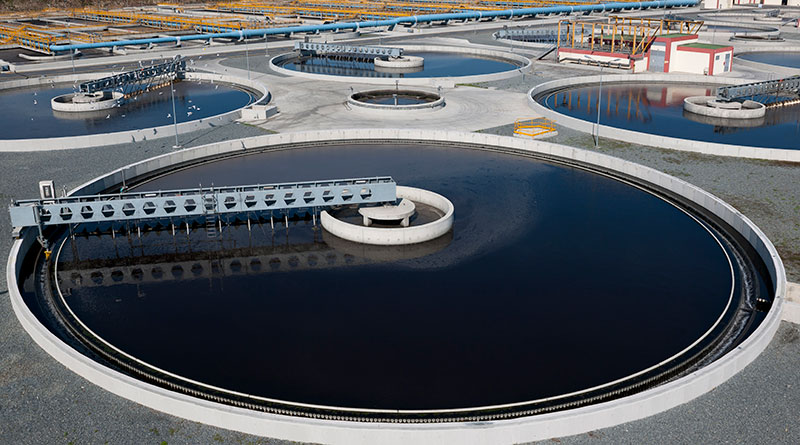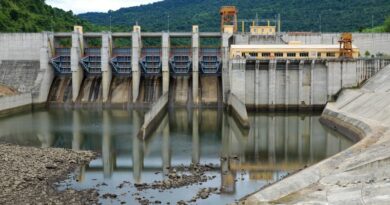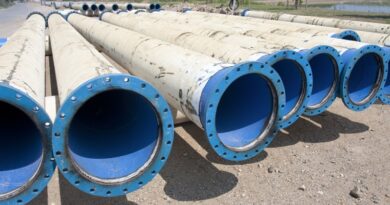PM inaugurates six STPs in Uttarakhand, museum on Ganga in Haridwar

Prime Minister Narendra Modi has inaugurated six mega projects in Uttarakhand under the Namami Gange programme, calling the projects a big step towards ensuring the cleanliness of the Ganga River.
With the projects’ completion, the sewage treatment capacity of Uttarakhand has gone up nearly four-fold in six years, said Modi, who remotely inaugurated sewage treatment plants (STPs) at Haridwar, Rishikesh, Muni-ki-Reti and Badrinath.
The projects include construction of a 68 MLD STP and up-gradation of the existing 27 MLD at Jagjeetpur and the construction of an 18 MLD sewage treatment plant at Sarai, Haridwar.
This marks the completion of the first sewerage project taken up on hybrid annuity model of public-private partnership (PPP) model.
“In the past decades, huge initiatives were taken up to clean river Ganga but those initiatives had neither public participation nor farsightedness. As a result, the water of river Ganga was never cleaned,” Modi said.
The Prime Minister termed the Namami Gange programme as the largest integrated river conservation mission which not only aims at the cleanliness of Ganga but also focuses on comprehensive upkeep of the river.
This new thinking and approach had made the Ganga return back to life, said Modi, adding that the Government had moved forward on the programme with a four-pronged strategy. First, it started laying a network of sewage treatment plants to prevent the wastewater from flowing into the Ganga. Second, the STPs were built by keeping in mind the demands for the next 10-15 years. Third, by making around hundred big towns and cities and five thousand villages along the Ganga open defecation free (ODF). Fourth, by making an all-out effort to stop the pollution in the tributaries of Ganga.
Under Namami Gange, projects worth more than Rs 30,000 crores are either in progress or have been completed. Due to these projects, the sewage treatment capacity of Uttarakhand has increased four times in the last six years.
The Prime Minister listed the efforts taken to close more than 130 drains in Uttarakhand from flowing into the Ganga. He referred specially to the Chandreshwar Nagar drain, which turned as an eyesore to visitors and rafters at Muni-Ki-Reti, Rishikesh. He applauded the closing of the drain and the construction of a four-storied STP at Muni-Ki-Reti.
The Ganga’s cleanliness was experienced by devotees from all over the world in Prayagraj Kumbh. Now during the Haridwar Kumbh, the whole world will have the experience of bathing in the clean Ganga and constant efforts are going on for the same, said Modi.
Highlighting the importance of keeping the Ganga clean as it plays a significant role in sustaining the lives of about 50 per cent of the country’s population from its origin in Uttarakhand till West Bengal, Modi also inaugurated the Ganga Avalokan Museum, the first of its kind on the Ganga at Haridwar.
He released a book “Rowing Down the Ganges” and the new logo for the Jal Jeevan Mission. The Prime Minister also unveiled the ‘Margadarshika for Gram Panchayats and Paani Samitis under Jal Jeevan Mission’ (guidelines for the village panchayats and water committees) on the occasion.
Modi said the Jal Jeevan Mission aims at providing every rural household in the country with piped-water connection. The new logo of the Mission shall continue to inspire the need to save every drop of water.
Referring to the Margadarshika, the Prime Minister said that they are equally important for the Gram Panchayats, people living in rural areas as well as for the Government machinery.
Describing the book “Rowing Down the Ganges”, he said it explains in details how the Ganga stands as a glowing symbol of our culture, faith and heritage.
Meanwhile, at a recent Webinar, Jal Shakti Ministry Secretary UP Singh said the Government was trying to undertake river rejuvenation programmes on the lines of the Ganga mission in other parts of the country.
A scientific study on the lines of the Ganga River cleaning project will be done for Periyar, Cauvery, Godavari, Narmada and Mahanadi. Lessons have been learnt while undertaking the Namami Gange mission and these are being applied to other river basins in the country.


